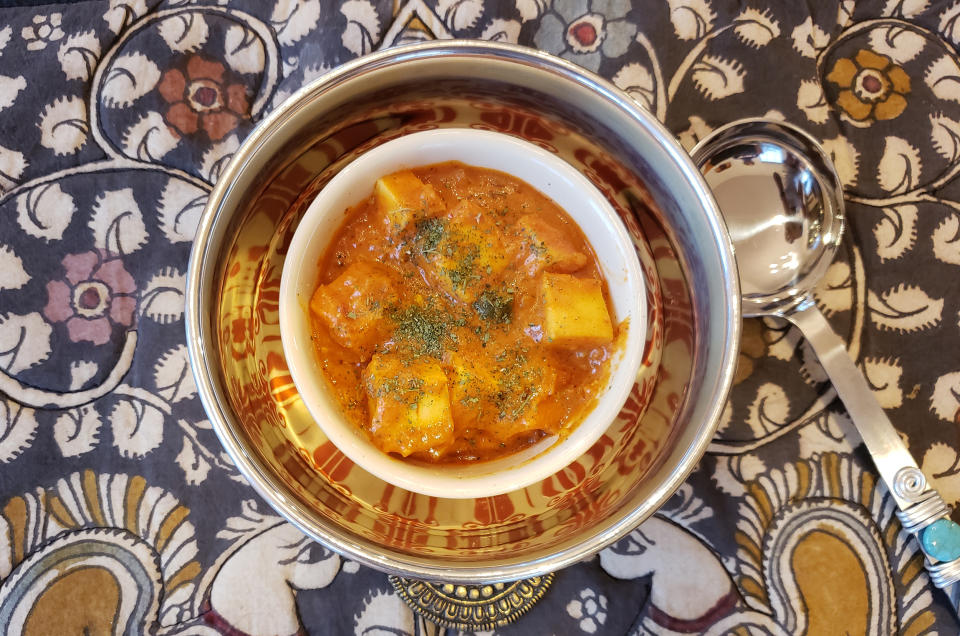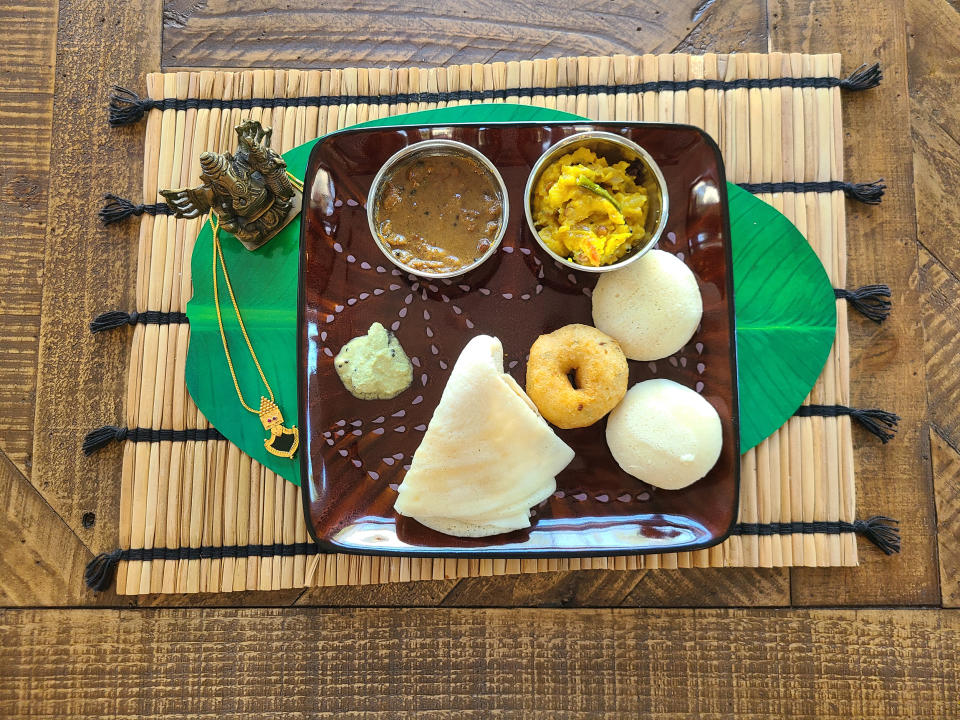Connecting To My Indian Culture Through Food
I’ve never had the privilege of knowing where I belong.
I’ve always had each foot in a different country — I’m too Indian for America and too American for India. But unlike most of my other first-generation friends, I have one more nuance to my relationship with my culture: language.
For the first time in twelve years, both of my grandmothers from India came to visit my family in Maryland at the same time this summer. They primarily speak Tamil, a South Indian language, and though they could get by speaking in English, they have a hard time understanding American accents.
It doesn’t get any easier if I try to communicate in our language. I’m fluent, but when I speak Tamil, it’s accompanied by an accent with sharp corners that makes the words sound all wrong coming out of my mouth. Instead, I end up speaking in slow, simple and articulate English to my grandmothers, with what I would approximate is an 80% success rate on basic subjects.
But what I’ve come to realize, especially after seeing my maternal grandmother again for the first time in five years, is that there is one language we can all communicate freely in: food.
When I was in preschool in suburban Baltimore, my mom would say everything to me twice, once in Tamil and once in English, so I could begin learning English translations to speak to my classmates and teachers every day. But what never had to be said twice were the names of foods. Paneer is just paneer, and as my English vocabulary began to take precedent over my Tamil vocabulary, paneer remained without me even realizing.

One morning after my grandmothers arrived, I went to the kitchen for an early lunch. My maternal grandmother was watching the cricket match in the family room — West Indies was batting, and it wasn’t looking good for India. My paternal grandmother was sitting in the kitchen, likely scrolling through endless WhatsApp messages from family in India. I began to talk to my mom about the meetings I had that morning and how they went.
“Ni yenna sollirai?” my paternal grandmother asked. What are you saying? But I didn’t have the vocabulary to translate “figuring out a lede for the article I’m writing” into Tamil.
My maternal grandmother turned away from the cricket match to ask me what I’m going to eat. "Yenna sappida porai?"
I shrugged and browsed through the freezer.
“Adhu ennadu?” she asked, gesturing from across the room to the frozen Trader Joe’s box I had picked. What is that?
“Noodles!” I replied. Immediately, a connection was formed. My grandmothers came to sit near me, and we started to recall the time they cooked spaghetti for me when I was little, visiting Bombay and refused to eat Indian food for another day.
While it’s hard to explain to my grandmothers the nitty gritty details of my job or the classes I plan to take at college in the fall, food has allowed me to find a special connection with them. Both were married by the age of 17, thrown into the world of housewives and learning to cook for their husbands. One of them even likes to say that cooking is her meditation. But deeper than that — and perhaps she doesn’t even realize it — cooking is her communication.
As my grandmothers’ visit went on, my discomfort in my own culture began to lessen. Each morning, our first conversation was about breakfast: idlis or upma? Halfway through breakfast, we were already discussing lunch plans: I’d heat up a frozen meal, and the grandmothers would eat leftovers from last night. By the afternoon, the smell of spicy sambar or crisp dosa would be wafting into my room, and we’d spend dinner talking about how the dish was made and family stories it reminded us of.

At the dinner table, “that’s enough” or “I’m full” is almost never an accepted response for my grandmothers. My paternal grandmother’s love language is to pile more food onto my plate after I’ve had multiple helpings. Even if she doesn’t have anything to talk to me about, just watching me eat provides her the utmost joy and satisfaction. Most of my grandmothers’ conversations between each other also revolve around food: how their recipes differ in each family and which dishes they cook most often back home in India.
For the first time since my childhood, I’ve felt a sense of belonging in my hyphenated identity. Making a naan pizza for lunch bridges my disparate experiences without compromising my rich culture. Talking about the reasons we make appams for a holiday lets me find a meaningful connection with my grandmothers even when I don’t feel comfortable speaking my native language.
In South Asian communities in particular, food is often seen as a source of connection, with meals being important times of coming together and focusing on your bodies.
This summer, I was able to see just how much this rings true with my family. Cooking food, eating food and talking about food connects me to my grandmothers in a way that English or Tamil — or even a mix of both — can’t quite seem to do. It’s given me small windows into my grandmothers’ lives and minds, and I’m incredibly grateful that it provides me moments of invaluable connection that transcend the normal boundaries of language.
On top of that, it’s shown me that there is one way in which my relationship with my native language isn’t as complicated as I thought it was. And on that note, I’ll just go check what’s for dinner.

